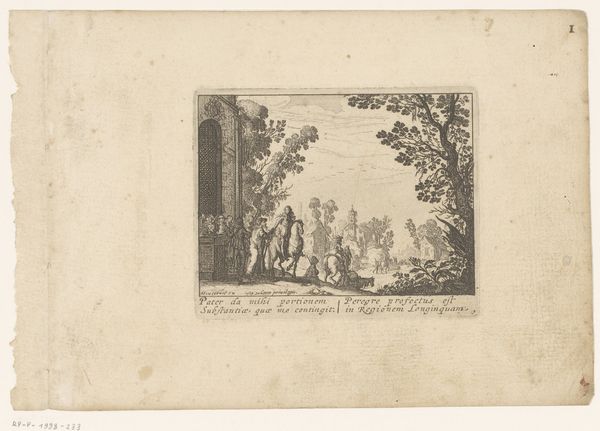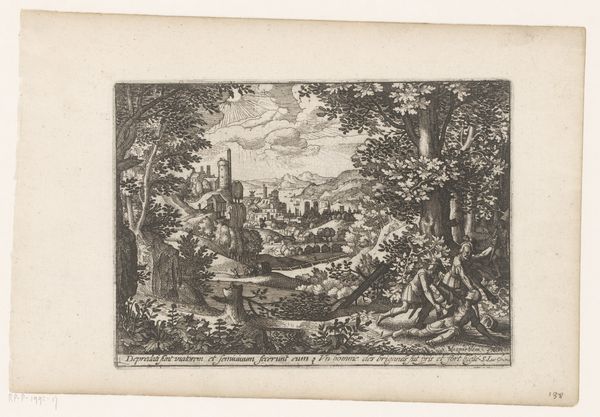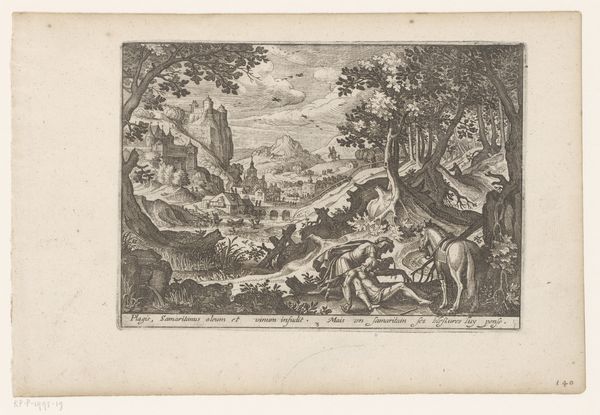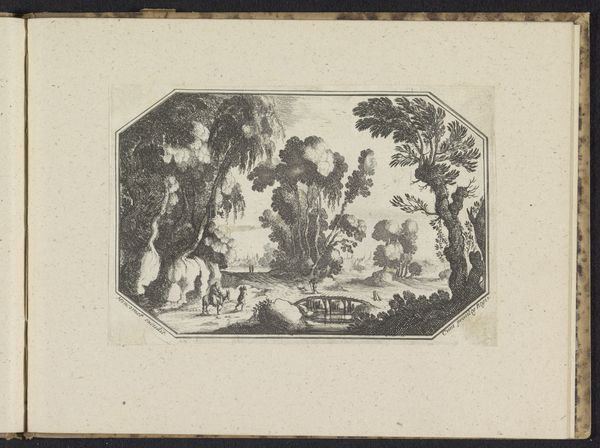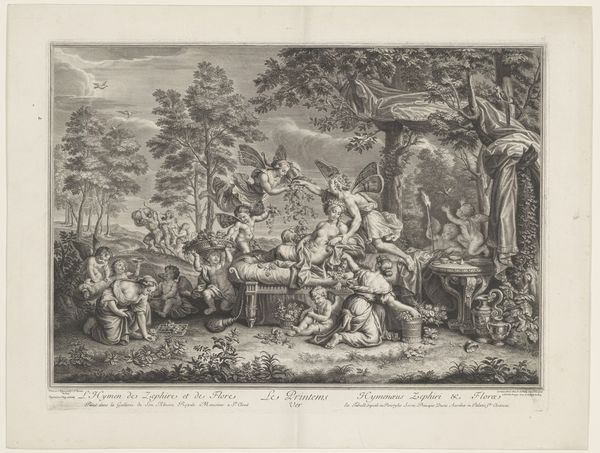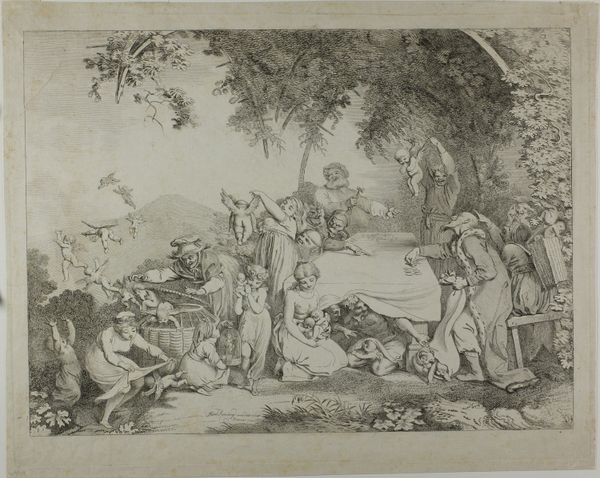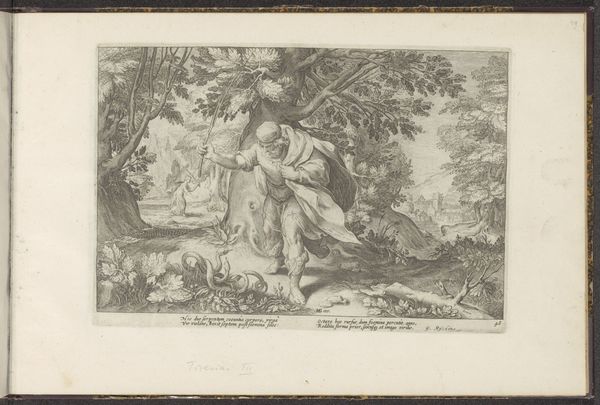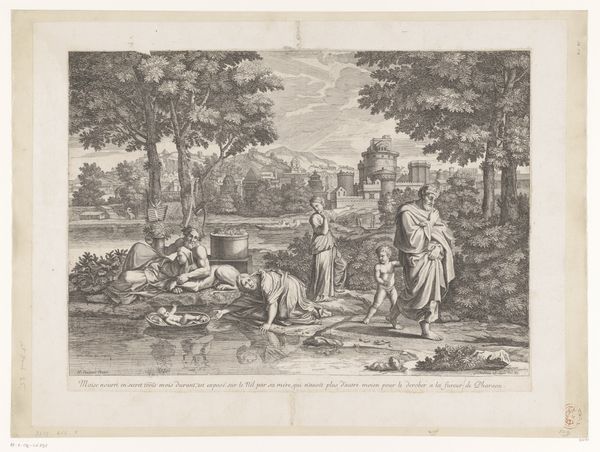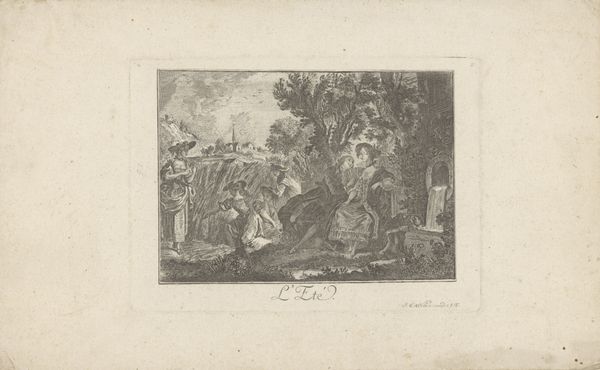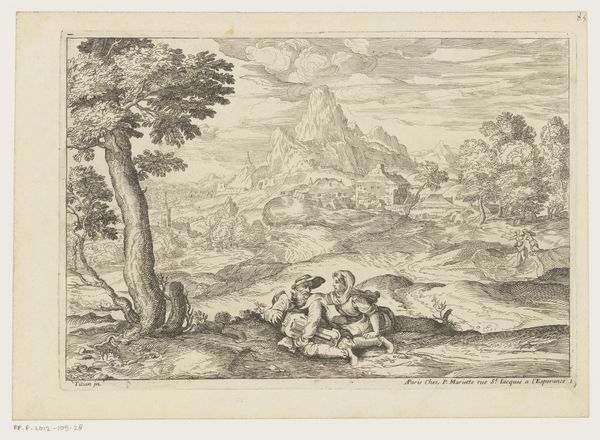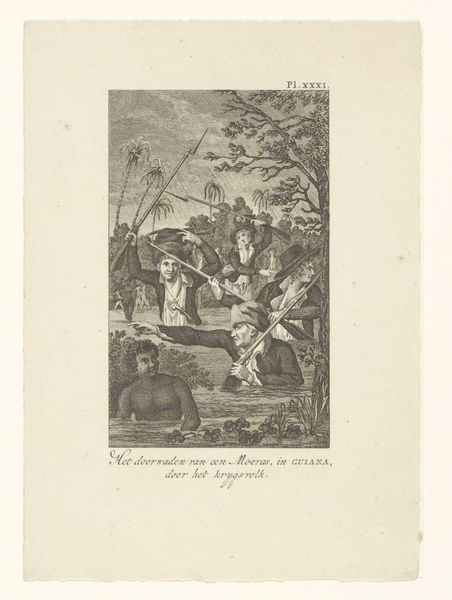
Landschap met verhaal van de barmhartige Samaritaan: de priester en de Leviet passeren het slachtoffer en laten het liggen 1564 - 1654
0:00
0:00
print, engraving
#
baroque
# print
#
landscape
#
history-painting
#
engraving
Dimensions: height 138 mm, width 188 mm
Copyright: Rijks Museum: Open Domain
Editor: We’re looking at "Landscape with the Story of the Good Samaritan: the Priest and the Levite Passing By and Leaving the Victim" an engraving by Jaspar de Isaac, dating somewhere between 1564 and 1654. It's a striking image in its detailed rendering, but I'm immediately struck by the seeming indifference of the figures relative to the vast, almost overwhelming landscape. What do you see in this piece? Curator: The overwhelming landscape is key. It reflects a hierarchical social structure that was becoming increasingly exposed through land enclosure and developing capitalist markets. This Biblical scene, set against a dominating backdrop, emphasizes the ways in which religious figures actively abandon the marginalized while societal systems implicitly promote such self-interest. Who benefits from that abandoned figure being unseen and unheard? Editor: That's a powerful reading. I hadn’t considered how the landscape itself could be a comment on social structures. So, you're saying the artist is using this well-known parable to critique power dynamics of the time? Curator: Precisely! The priest and the Levite represent established power, while the wounded man symbolizes those failed by the systems that should protect them. Think about the historical context: the rise of merchantilism, religious conflicts, and increasing disparities in wealth and resources. What roles might the historical Church and nobility have had in supporting these systems, according to Isaac? Editor: It really forces you to consider how seemingly simple biblical tales can hold deep-seated social and political critiques. Curator: Yes, and it’s not just about critique, but about the call for empathy and action in a world often defined by its injustices. By centering this biblical story, Isaac makes explicit demands of morality. What is the impact on modern interpretations? Editor: I appreciate the deeper dive into the socio-political context here. It’s changed how I see the engraving. It's a great reminder that art doesn’t exist in a vacuum. Curator: Indeed. Let's see how we might challenge assumptions and open space for dialogue with some other art now.
Comments
No comments
Be the first to comment and join the conversation on the ultimate creative platform.
